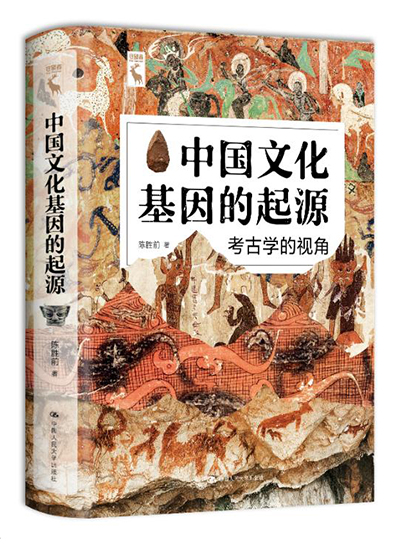Archaeology decodes Chinese cultural genes

The Origins of Chinese Cultural Genes: An Archaeological Perspective
The Origins of Chinese Cultural Genes: An Archaeological Perspective, written by Chen Shengqian, a professor from the School of History at Renmin University of China, presents an archaeologist’s thinking on “Chinese cultural genes,” and combines prehistoric archaeological achievements to explore the core of Chinese civilization stretching back for thousands of years.
A cultural gene is a long-standing cultural trait that appears from time to time and determines the identity of a group. It is distilled from structures that have long been stable in a culture. Chen believes that human culture has a similar tendency to the development of biology, that is, it conforms to the assumption of evolution. The idea stems from what British biologist Richard Dawkins called the “dual inheritance theory,” or gene-culture coevolution. According to the theory, the source of biological change is gene mutation, recombination, and migration, while that of cultural change is innovation, synthesis, migration, and diffusion, both of which share similar characteristics. However, due to the complex culture system of different levels, culture genes demonstrate the characteristics of fragmentation, neutrality, multi-layer, continuous creation, and continuous transmission. Compared with cultural tradition and cultural traits that are more inclined to structuralist and static concepts, cultural genes can undoubtedly better explain the fundamental attributes, inheritance, and change mechanism of human culture.
The book focuses on the spiritual core of the Chinese cultural gene. At the core of the Chinese cultural spirit is unremitting self-discipline and social commitment with virtue, which leads the long duration of the Chinese nation. The early roots of Chinese cultural genes can be traced at least to the early Neolithic age when agriculture first originated. Chen even concluded that the Chinese cultural gene may have formed earlier. In Paleolithic archaeology, there is a famous “Movius line,” along which the kit of chopping tools in East Asia showed a continuous and stable tradition of Paleolithic cultural development, which was quite different from the Acheulean tradition on the western side of the Movius line. Such an assumption makes sense, but still needs further theoretical and material evidence.
In Chen’s view, agriculture has greatly changed human society, and the essence of agriculture or food production is control. In contrast to highly mobile hunter-gatherers, food production requires a group of people to cultivate and multiply on a tract of land over a long period of time. This generalization of the nature of agricultural production explains the emergence of new identity representations including social class, birth, and bloodlines. Then came the birth of states and civilizations. Thus the author held that the Chinese civilization system’s pattern was established around 10,000 years ago.
Xu Zijin is from the School of History at Renmin University of China; Yang Linxu is from the University of Chinese Academy of Social Sciences.
Edited by YANG LANLAN
